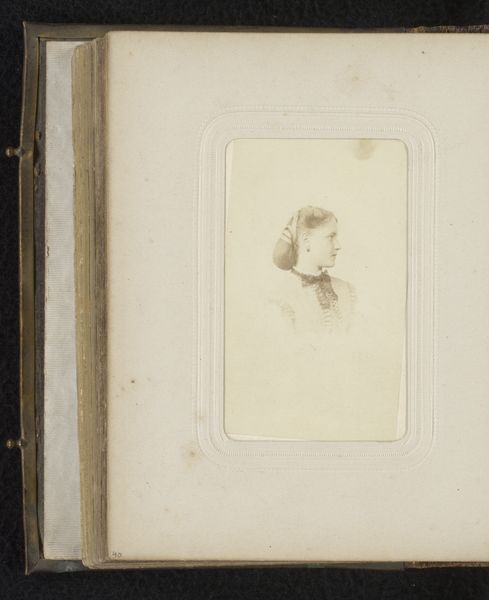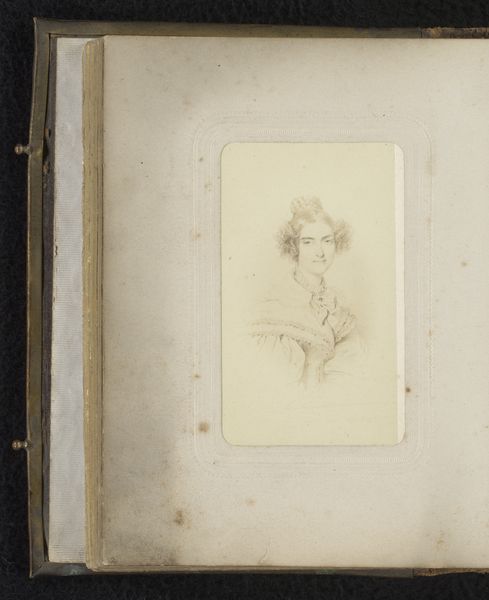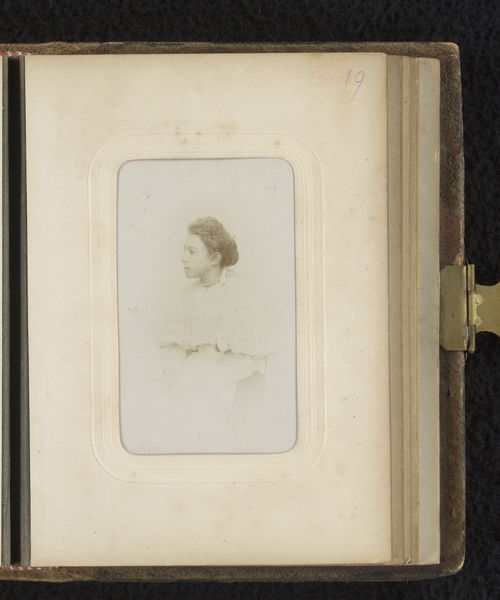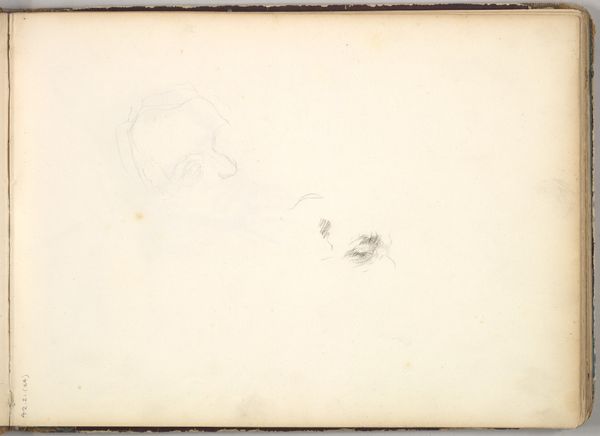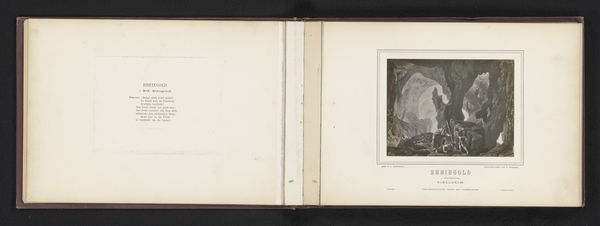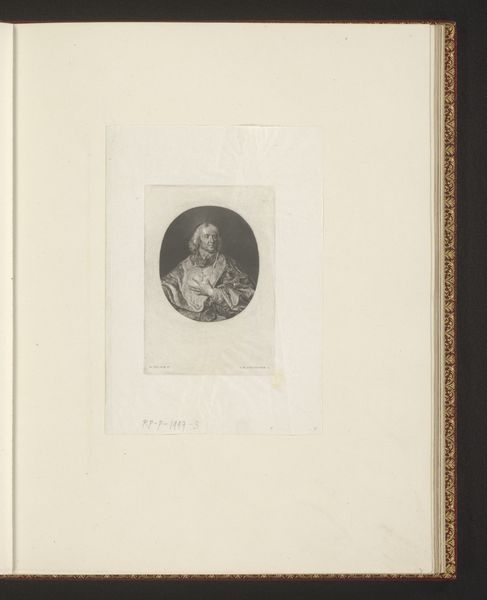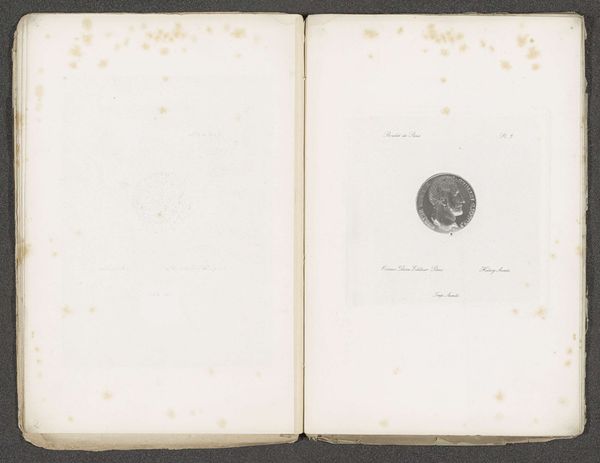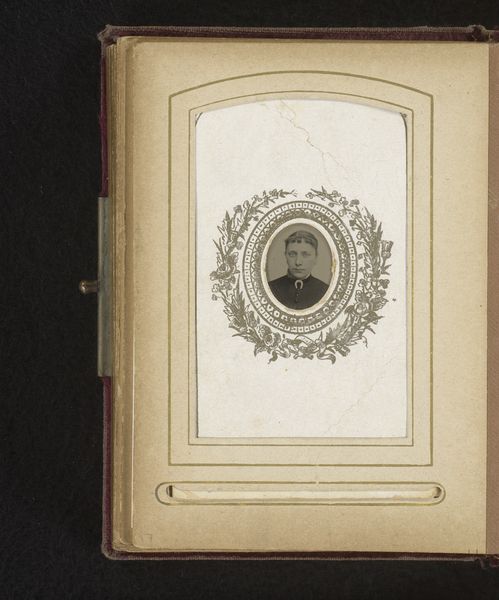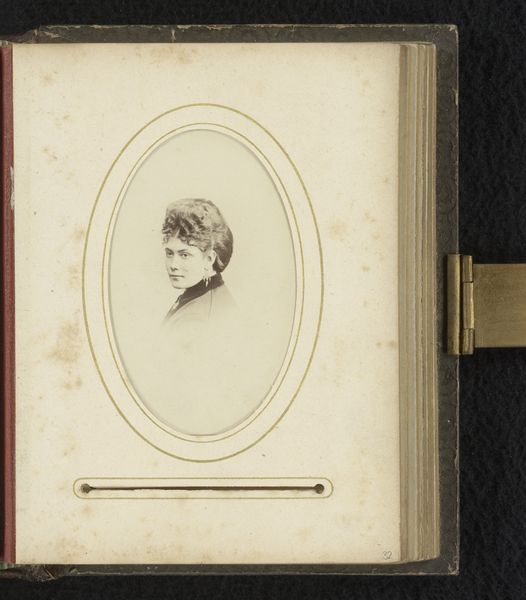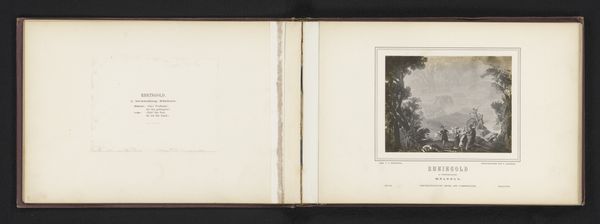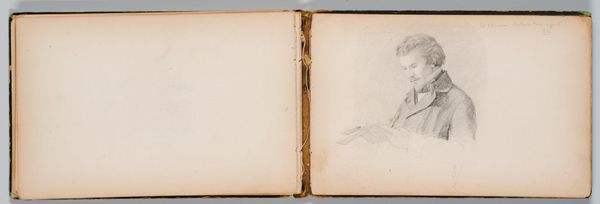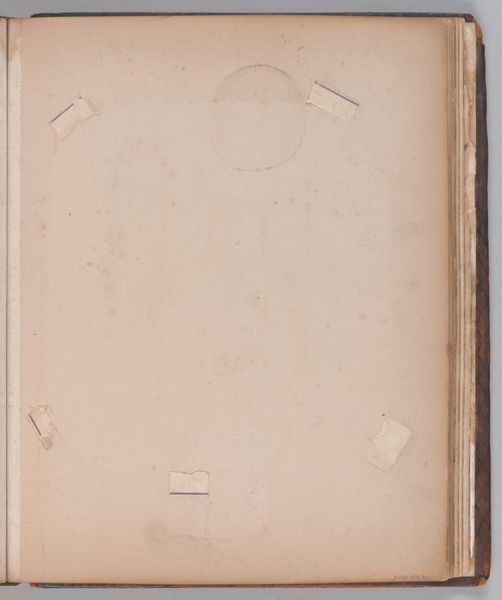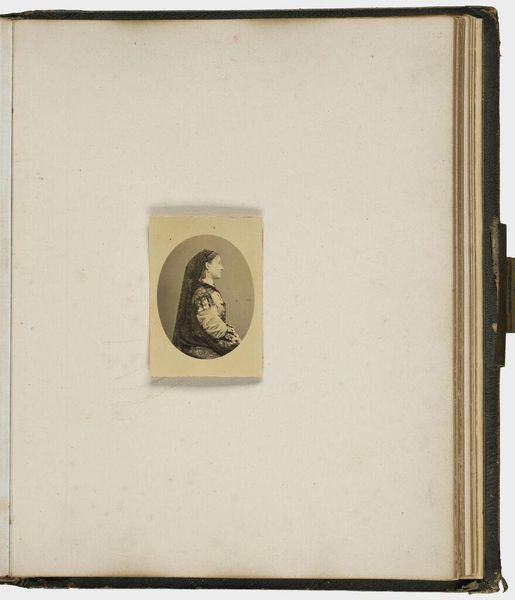
photography, albumen-print
#
portrait
#
photography
#
child
#
coloured pencil
#
albumen-print
Dimensions: height 87 mm, width 51 mm
Copyright: Rijks Museum: Open Domain
Editor: Here we have a curious piece, simply titled "Portret van een kind," or "Portrait of a Child" in English, dating from around 1860 to 1890. It seems to be an albumen print, housed in what looks like an old photo album. It has this lovely melancholic feel to it, doesn't it? What do you see in this piece? Curator: The enduring image of a child, carefully preserved. That sepia tone evokes a strong sense of the past. It almost has the feel of a Byzantine icon, don't you think? The child stares straight ahead, engaging the viewer directly. We're meant to remember. Consider how different that direct gaze might have seemed then. Can you imagine? Editor: Absolutely. I guess that unflinching stare in a portrait would have felt much more meaningful when it wasn't as common as today's ubiquitous photographs. Do you think that gaze is supposed to represent something about the child or childhood? Curator: It could symbolize innocence, of course, but I also feel it's meant to stand for posterity. To fix the child's essence against time's relentless march. Every detail carries weight – clothing, pose, even the lighting become encoded messages. Each visual symbol preserves cultural memory. What else stands out for you? Editor: It's also strange to me that it seems a little off-centre in the frame. The formality is beautiful, but the composition feels unbalanced, adding to the melancholic mood. Maybe I'm reading too much into it. Curator: Not at all. Remember that early photography demanded specific physical practices of both the photographer and sitter. This could indicate someone experimenting with emerging portrait techniques. Even "mistakes" carry intention and psychological insight, and that is invaluable. Editor: That's fascinating. I wouldn’t have thought of it that way. It’s interesting how an image seemingly so simple can hold so much, now that you have given me other ways to interpret it.
Comments
No comments
Be the first to comment and join the conversation on the ultimate creative platform.
